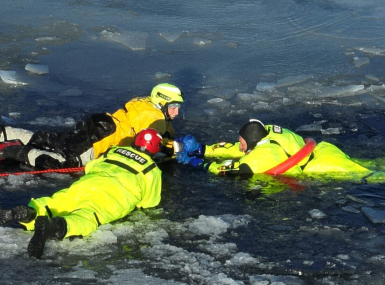States eyeing policy changes to force immigration enforcement cooperation
States jump into immigration cooperation fray
A busy week of action in state capitols in late March attempted to clarify policies guiding local governments' cooperation with federal immigration authorities.
Mississippi Gov. Phil Bryant (R) signed a law March 27 outlawing policies by local governments that would defy detention requests by federal authorities, the same day Virginia Gov. Terry McAuliffe (D) vetoed a bill that would have prevented local governments from restricting federal immigration law enforcement. A day later, Vermont Gov. Phil Scott (R) signed a law prohibiting state and local police from participating in federal immigration enforcement, but insisted it would not conflict with federal regulations, while in Montana, the state House passed a bill targeting local governments that would resist assisting immigration efforts.
A California bill, pending review, prevents local authorities from enforcing immigration laws. Maryland Gov. Larry Hogan (R) has promised to veto a similar law that likely won't pass the Senate.
More than 90 bills have been introduced in 29 state Legislatures and the District of Columbia, clarifying compliance with the U.S. Immigrations and Customs Enforcement (ICE) detainer requests.
Learn More
The National Conference on State Legislatures' immigration resources
“It’s turned into the hot topic of the year,” said Ann Morse, program director for immigration policy at the National Conference of State Legislatures. “There are a lot of bills introduced that are meant to express support and are not likely to make it through the process, but most have encouraged cooperation with ICE.”
Detainers are issued by ICE to hold an inmate for 48 hours beyond adjudication if they are in the country illegally, during which time ICE officials would take custody. Counties are responsible for the detention costs in the meantime.
Twenty-five states are considering legislation clarifying how counties and cities should treat detainer requests, with several planning to withhold federal and state money from counties and cities that ignore detainer requests. Different chambers in Florida and Texas have passed bills disapproving of sanctuaries.
Eight states and D.C. are opposed to ICE detainer compliance and five states have legislation taking both sides of the argument.
In 2014, federal courts entered the detainer compliance debate.
Three court decisions determined that compliance with ICE detainers was voluntary; that being held on a detainer without cause violates a person’s Fourth Amendment rights against unlawful arrest and detention; and that counties could be held responsible for holding someone beyond 48 hours.
Lehigh County, Pa. lost $95,000 when settling with a New Jersey resident who was mistakenly jailed.
That court decision changed the way Pennsylvania counties viewed detainer requests and has landed 15 of the state’s 67 counties on a list of jurisdictions that ICE claims enacted policies to disregard detainer requests.
Clarion County, Pa. was the first, establishing a county corrections policy in 1997 that rejected holding individuals based solely on an ICE detainer, instead requiring a warrant. Only Clarion and Lebanon counties in Pennsylvania, King County, Wash. and Cook County, Ill. established county policies on ICE detainers before court decisions in early 2014 changed local governments’ view of detainers.
No uniform definition of a sanctuary policy has been adopted nationwide, however.
Fear of liability and vague direction has put those counties in a tough place, said Doug Hill, executive director of the County Commissioners Association of Pennsylvania.
“It is incredibly unfortunate that someone decided to call this a sanctuary issue,” he said. “This is not the same thing, in the true historical meaning of sanctuary, that is, you come here and you won’t be arrested. Our view is this has nothing to do with immigration policy, and not one of our members has adopted these so-called violation policies out of an interest in hiding, coddling or giving comfort to anyone who is here illegally.”
The Lehigh County case threat motivates everything.
“We do everything ICE asks, but if someone qualifies for bail, we release them," Hill said. "We’re obligated to let them go.”
A bill in the state Senate would withhold a collective $1.3 billion in state funding from 20 municipalities if they don’t accept detainers. Hill said the House could take up the legislation late in April, or move it into the summer, after the state budget is addressed.
Unlike Pennsylvania’s proposed legislation, Mississippi’s new law passed quickly.
“It was like a freight train coming,” said Steve Gray, director of government affairs for the Mississippi Association of Supervisors. “At the end of the day it was a leadership agenda item. There were no hearings, no meetings to get feedback from local government, but we have yet to hear from any counties about that.”
The only applicable policy in place in Mississippi is a 2010 ordinance that prevents city police officers in Jackson from asking about immigration status.
NCSL’s Morse said the recent trend in state immigration policies has been a dramatic shift from recent years, during which states focused more on fostering community policing environments.
“There was a recognition that public safety, versus national security, is the domain of state and local law enforcement,” she said. “The interest is making sure witnesses come forward, victims come forward to manage crime. The ratio of the public to law enforcement requires trust of the community.”
Anti-immigrant sentiment in the United States and Europe, however, is on the rise.
“With the latest rhetoric, the concern about national security, terrorist attacks around the world and tightening visas, the climate has changed dramatically,” Morse said. “It’s turned much more into a fear factor.”
Any criticism local governments are receiving is unwarranted when you examine actual justice policy, she said.
“The bottom line is that nobody is releasing violent criminals,” she said. “These are people who have served their time and are eligible to be released. If they committed violent crimes, they’d be turned over to ICE.”
Attachments
Related News

County officials moonlight in search and rescue roles
For some county officials, participating in search and rescue operations is another way to serve their communities, and make it safer for people to enjoy natural recreation resources.

SUPPORT Reauthorization Act of 2025: What it means for counties
On December 1, the bipartisan SUPPORT for Patients and Communities (SUPPORT) Reauthorization Act of 2025 (H.R. 2483) was signed into law. The reauthorization renews vital federal funding for programs that seek to prevent opioid overdoses and expand treatment and recovery options.

DHS releases FY 2026 funding opportunities for World Cup and Counter-UAS grants
The U.S. Department of Homeland Security (DHS) and the Federal Emergency Management Agency (FEMA) have released the FY 2026 Notices of Funding Opportunity (NOFOs) for two major new homeland security grant programs: the FIFA World Cup Grant Program and the Counter-Unmanned Aircraft Systems (C-UAS) Grant Program.
